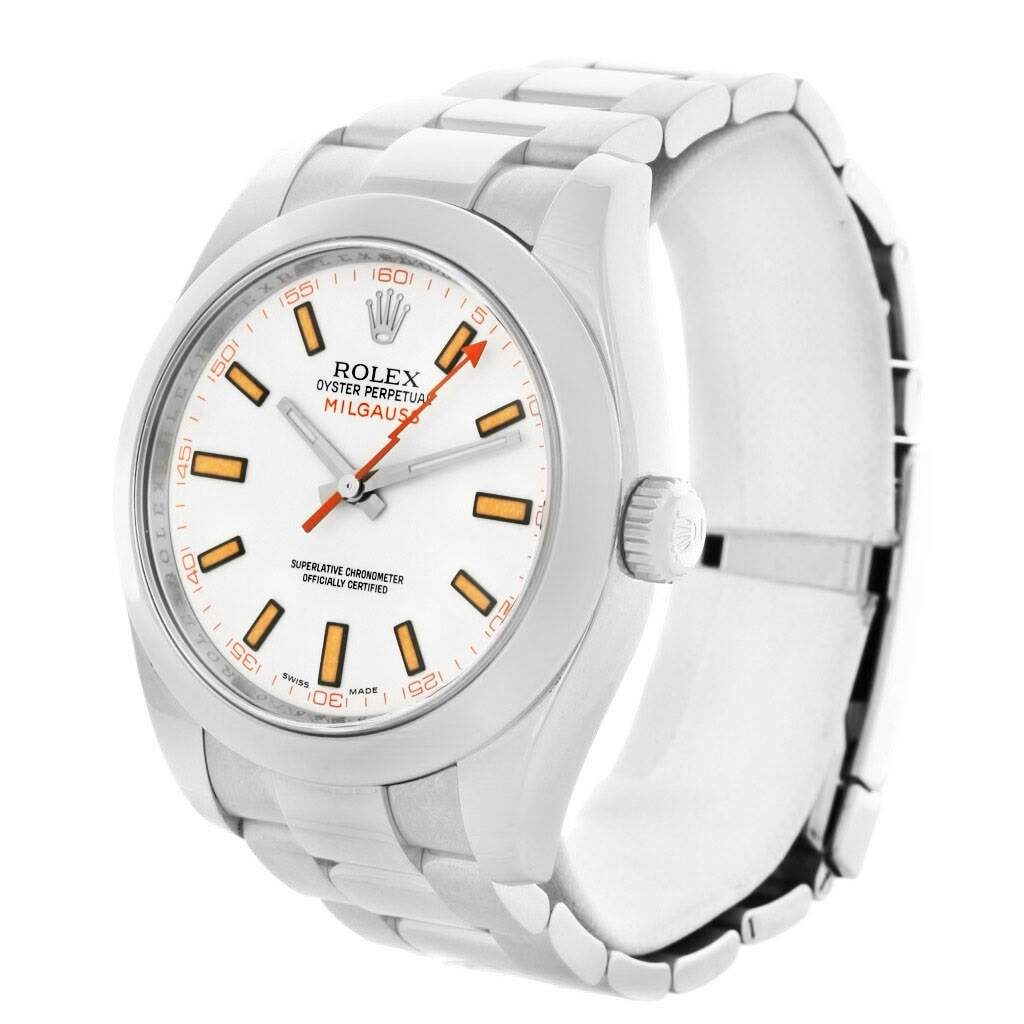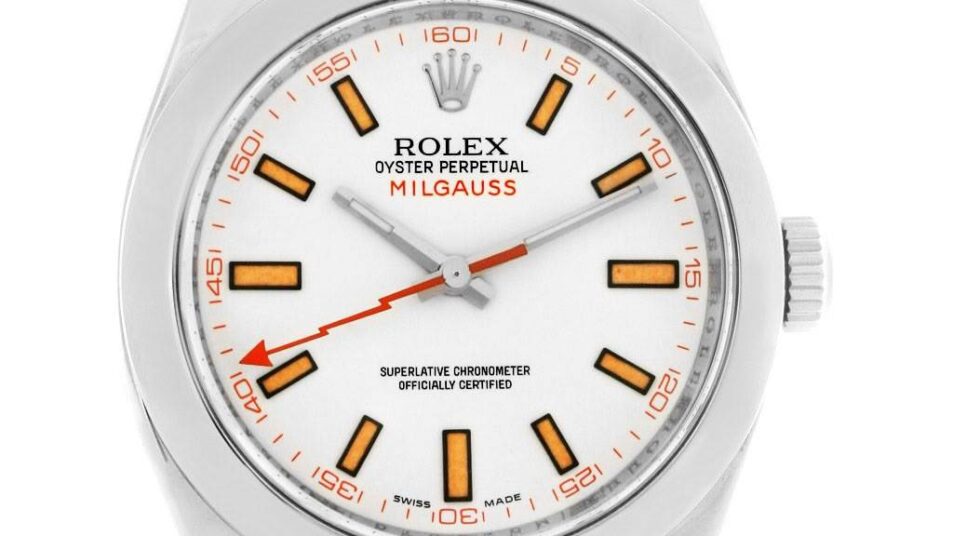Rolex Milgauss, the first to defy magnetism
One of the complications in making a watch is the material. In the early days of this industry, one of the main problems was that the mechanics of the replica watch were affected by magnetism, leading to malfunctions and errors in time accuracy, so challenging magnetism was imperative to the development of the watch industry.
Rolex, a pioneer in the industry, was also a pioneer in this subject. As the clone Rolex Milgauss was the first watch to address the issue of magnetism, this broke the market at the time and made this model one of the hallmarks of the brand mentioned above.
As we know, most mechanisms use materials such as metals that are magnetic, and if our watches are exposed to magnets or are in certain spaces on earth where magnetism is strong, the clocks will go backward or even forward. This problem mainly affects mechanical watches, although problems can also occur with analog quartz mechanisms, which is why it is important to demagnetize our creations.
In 1956, Rolex decided to innovate and introduced the first antimagnetic watch on the market, the Milgauss, which took its name from the measurement of the power of a magnet, called Gauss. This first model supported a magnetic force of one thousand Gauss.
This iconic model, whose first version has become a kind of Holy Grail for collectors, was launched in 2007 in three versions, the first with a white or black dial, depending on the customer’s choice, with a colorless sapphire crystal; a second version called GVlace Verte and, finally, the third version with a black dial, called the Anniversary model.
It was in the same year that the Milgauss caliber 3131 model with automatic movement was launched, featuring a new technology for avoiding magnetic fields, notably in its mechanism, which also has a Swiss chronometer certification, in addition to another certificate issued by the European scientific agency CERN, which operates a particle physics laboratory that gives an insight into the quality of the Milgauss to avoid being affected by magnetism.
To achieve the ability to be unaffected by magnetism, Rolex designed a case that mimics a Faraday cage, for which they chose materials such as beryllium, well over 60 gausses, the minimum measurement considered anti-magnetic for a fake watch, in the case of the Rolex Milgauss, which, as we mentioned before, supports 1000 gauss.
The first Milgauss is the rarest and most difficult to find, which is why collectors so covet it, its lightning-like second hand is one of the special hallmarks of this model.

